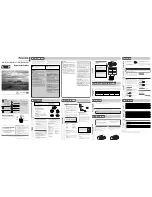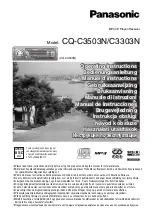
20
Using P
o
w
erT
ouch
How Do I Adjust the Surround Modes?
•
You cannot select the Input Analog mode if you are playing DTS-encoded
media.
•
You cannot listen to DTS-encoded media in Zone B.
•
When playing DTS-encoded media, wait until “DTS” appears on the
receiver display before proceeding.
•
The listen mode is fixed to Stereo during playback of 96k fs signals.
•
DTS NEO:6:
This is a new technology which decodes 2-channel sig-
nals into 6-channel signals using high-accuracy digital matrix tech-
nology. The DTS NEO:6 decoder has near-discrete properties in the
frequency characteristics of the channels as well as in channel separa-
tion. According to the signals to be played back, DTS NEO:6 uses ei-
ther the NEO:CINEMA mode optimized for movie playback or the
NEO:MUSIC mode optimized for music playback.
•
MPEG:
MPEG, which stands for “Moving Pictures Experts Group”, is
an international standard of digital video and audio compression and
decompression in media. It is the most efficient encoding method for
compressed multi-channel audio which provides the highest sound
quality to deliver the best movie theater sound into the home.
•
DSP (Digital Signal Processing):
DSP allows you to create your
own custom surround sound environments and use them with any
source (except Dolby Digital, MPEG, DTS and DTS-ES). You can se-
lect the ambience of an Arena, Jazz Club, Stadium, Cathedral, Theater
or Concert hall, and then modify the parameters to ‘fine-tune’ the envi-
ronment to your taste. (See “Applying Digital Signal Processor (DSP)
Effects” on page 30 for details about making DSP adjustments.)
•
Multi ch Music (Multichannel music):
All speakers are used to real-
ize a stereo sound with a wide listening range.
•
Stereo:
Stereo listen mode provides standard stereo sound to the front
left and right speakers.
















































